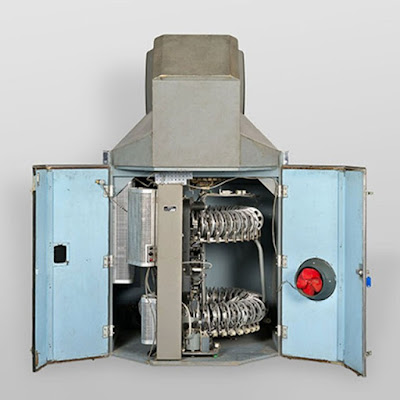History's Dumpster Mobile Link
History's Dumpster for Smartphones, Tablets and Old/Slow Computers http://historysdumpster.blogspot.com/?m=1
Saturday, August 20, 2016
It Seemed Like A Good Idea Part 3
Labels:
1920s,
1930s,
1940s,
1950s,
1970s,
Banned,
Beauty,
Dangerous,
Mail Order,
Novelty,
Obscure tech,
Scam,
Strange Products
Tuesday, July 05, 2016
Post Bran And Prune Flakes
Obviously, this stuff wasn't for the kids,
In fact, it's been a long time since prunes were popular in any configuration. When I was growing up, only senior citizens ate prunes. I knew of no one younger than 60 that ate them. One elderly neighbour lady introduced me to these things. They tasted gross to me. She went on and on about how much she always ate prunes in her youth. I guess that's why they called it "The Depression".
So I don't think many younger folks even know what they are today. I never liked them personally (just the name "prune" conjures up nursing home kitchen fodder) and I don't see them in many stores these days. Once in a while, maybe.
Post Bran & Prune Flakes was truly a "grown-up" product of it's time. No crazy mascots, awesome prizes or flavour gimmickry in these boxes. Just a plain, middle of the road cereal for middle age and older.
Introduced in the late 1950s, Post Bran & Prune Flakes were popular with the Geritol crowd during the '60s. But sales began sliding off by the latter half of the decade. They were discontinued in 1972.
Monday, July 04, 2016
Thursday, June 30, 2016
Caravelle Candy Bars
While many people today think the only products made by The Peter Paul Company (now a division of the Hershey company since 1988) are the famous Almond Joy and Mounds bars, that isn't true. They offered other kinds too, but a much smaller variety than competitors Hershey, M&M/Mars and Nestle. Being 4th ran against these giants made them that way.
Caravelle was introduced in the early '70s to compete with the similar Nestle's $100,000 bar (known the 100 Grand bar since the mid-'80s). But whereas the $100,000 bar tastes processed and is kind of rubbery, Caravelle was lighter and sweeter tasting.
They also had this famous TV commercial with an earworm jingle. I remember seeing this frequently when I was growing up in the '70s.
Caravelle was discontinued in 1988.
Wednesday, June 29, 2016
The Scopitone and Cinebox
 |
| An American Scopitone 450 jukebox. Image: Scopitone Archive |
Although not the first of it's kind (there are mechanical and human assisted, silent and black and white examples of coin operated on-demand movie systems going back to the early 1900s, including the 1940s Panoram and the notorious "peep-show" private viewers), the Scopitone and Cinebox were different in that they were all electric, had sound and they were in colour.
Actress Joi Lansing made Scopitone's most famous (and cheesiest) film "The Web Of Love" in 1965.
One distinctive thing about Scopitone films were most of the musical numbers all had girls (and some guys) doing go-go dancing of some sort.
They were invented in Europe. First the Scopitone in France and it's similar rival, the Cinebox in Italy where they became wildly successful. The Cinebox came to America first in 1963 and was quickly followed by the Scopitone. However, the Scopitone instantly created a media buzz and a fad in countless cocktail lounges and public waiting areas in the mid 1960s.
One early investor in Scopitone's American division was actress Debbie Reynolds.
Restaurant and lounge owners quickly signed up after reading the salesman's brochure. It really looked like The Next Big Thing.
 |
| Scopitone promotional banner |
(Warning: "Fiesta Hippie", although tame by today's standards may still be NSFW.)
Another is Scopitone was mentioned in a federal investigation into organized crime. Fearing a scandal that involves The Mob, many businesses canceled their Scopitone services and returned the machines.
 |
| A Scopitone can hold up to 36 reels of film |
Procol Harum's 1968 hit "A Whiter Shade Of Pale" was the only known rock song available on Scopitone. There was never a release for the Cinebox.
The Scopitone was largely gone by 1970 in America. However, there were still new Scopitone films made, albeit in France. The last known Scopitone film was made in 1978. The old Scopitone projectors were mostly junked, although some were converted into peep show systems for X rated adult film arcades. Only a handful were preserved and are now mostly in museums and private collections.
It's Italian rival, the Cinebox (later renamed Colorama) was actually introduced to America earlier than the Scopitone (1963). Like the Scopitone, it had a very limited American catalog, but LOTS of Italian musical acts.
It too had a short life in America and in spite of being the first video jukebox in America, arriving months before the Scopitone. It was eclipsed by Scopitone's promotional machine, rendering Cinebox as an also-ran to Scopitone. And when the ax fell at Scopitone over the alleged Mob associations, Cinebox also felt it. The public felt like these machines were just tools of the Mob in spite of Cinebox never being involved with that in any way. Besides, neither Scopitone or Cinebox were very profitable overall.
Cinebox also ended it's American distribution and folded completely in 1978.
More on The Scopitone and Cinebox:
Scopitone Archive (Has information on both the Scopitone and Cinebox as well as the Color-Sonic system.)
Scopitones
Scopitone (Wikipedia entry)
Cinebox (Wikipedia entry)
Kitschy Scopitone jukebox brought the jams before MTV
Labels:
1960s,
Film,
Music Video,
Obscure tech,
Pop,
Promotional,
Rare,
TV,
Video
Subscribe to:
Posts (Atom)

































